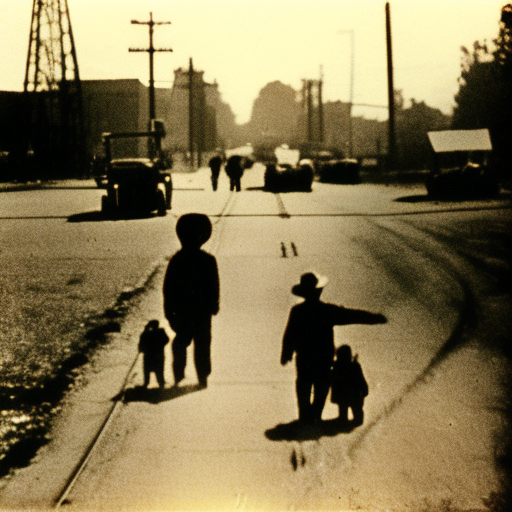The Great Depression: A Period of Economic Crisis
The Great Depression was a severe worldwide economic downturn that lasted from 1929 to the late 1930s. It was the most devastating economic crisis in the history of the United States and had a profound impact on the global economy. The depression was characterized by a sharp decline in industrial production, high unemployment rates, deflation, and a significant decrease in consumer spending.
Causes of the Great Depression
The Great Depression was primarily caused by a combination of economic factors and government policies. One of the key factors was the stock market crash of 1929, also known as “Black Tuesday.” This event marked the collapse of stock prices on the New York Stock Exchange and triggered a chain reaction of financial panic and bank failures.
Other contributing factors included overproduction and underconsumption, which led to a surplus of goods and a decrease in prices. Additionally, the unequal distribution of wealth and income inequality created a situation where the majority of the population did not have enough purchasing power to sustain economic growth.
Impact on the United States
The Great Depression had a profound impact on the United States, affecting all aspects of society. The unemployment rate skyrocketed, reaching its peak at 25% in 1933. Many businesses and industries collapsed, leading to widespread poverty and homelessness. The agricultural sector was hit particularly hard, as falling crop prices and drought conditions forced many farmers to abandon their land.
The depression also had a significant impact on the banking system. Thousands of banks failed, causing people to lose their life savings. The lack of confidence in the banking system led to a decrease in consumer spending and further deepened the economic crisis.
Government Response
In response to the Great Depression, the U.S. government implemented various policies and programs to stimulate the economy and provide relief to those affected. President Franklin D. Roosevelt’s administration introduced the New Deal, a series of economic reforms and public works projects aimed at creating jobs and boosting consumer spending.
The New Deal included programs such as the Civilian Conservation Corps (CCC), which employed young men in conservation projects, and the Works Progress Administration (WPA), which provided jobs in construction and infrastructure development. The Social Security Act was also passed during this time, establishing a system of retirement benefits and unemployment insurance.
Global Impact
The Great Depression had a significant impact on the global economy. The collapse of the U.S. stock market led to a worldwide financial crisis, as international trade and investment declined sharply. Countries reliant on exports, such as Germany, were hit particularly hard, leading to political instability and the rise of extremist ideologies.
The depression also led to a decline in international cooperation and the rise of protectionist policies. Countries imposed tariffs and trade barriers to protect their domestic industries, further exacerbating the economic downturn.
End of the Great Depression
The Great Depression gradually came to an end in the late 1930s and early 1940s. The outbreak of World War II played a significant role in stimulating the global economy, as increased government spending on defense and war production created jobs and boosted industrial production.
In the United States, the economic recovery was also aided by the implementation of Keynesian economic policies, which emphasized government intervention and increased public spending to stimulate demand and promote economic growth.
Legacy
The Great Depression had a lasting impact on the United States and the world. It led to significant changes in economic policy, with governments adopting measures to prevent future economic crises. The social and political consequences of the depression also shaped the course of history, contributing to the rise of welfare states and the expansion of government involvement in the economy.
Overall, the Great Depression was a period of immense economic hardship and social upheaval. It serves as a stark reminder of the dangers of unchecked speculation, income inequality, and the importance of government intervention during times of economic crisis.












